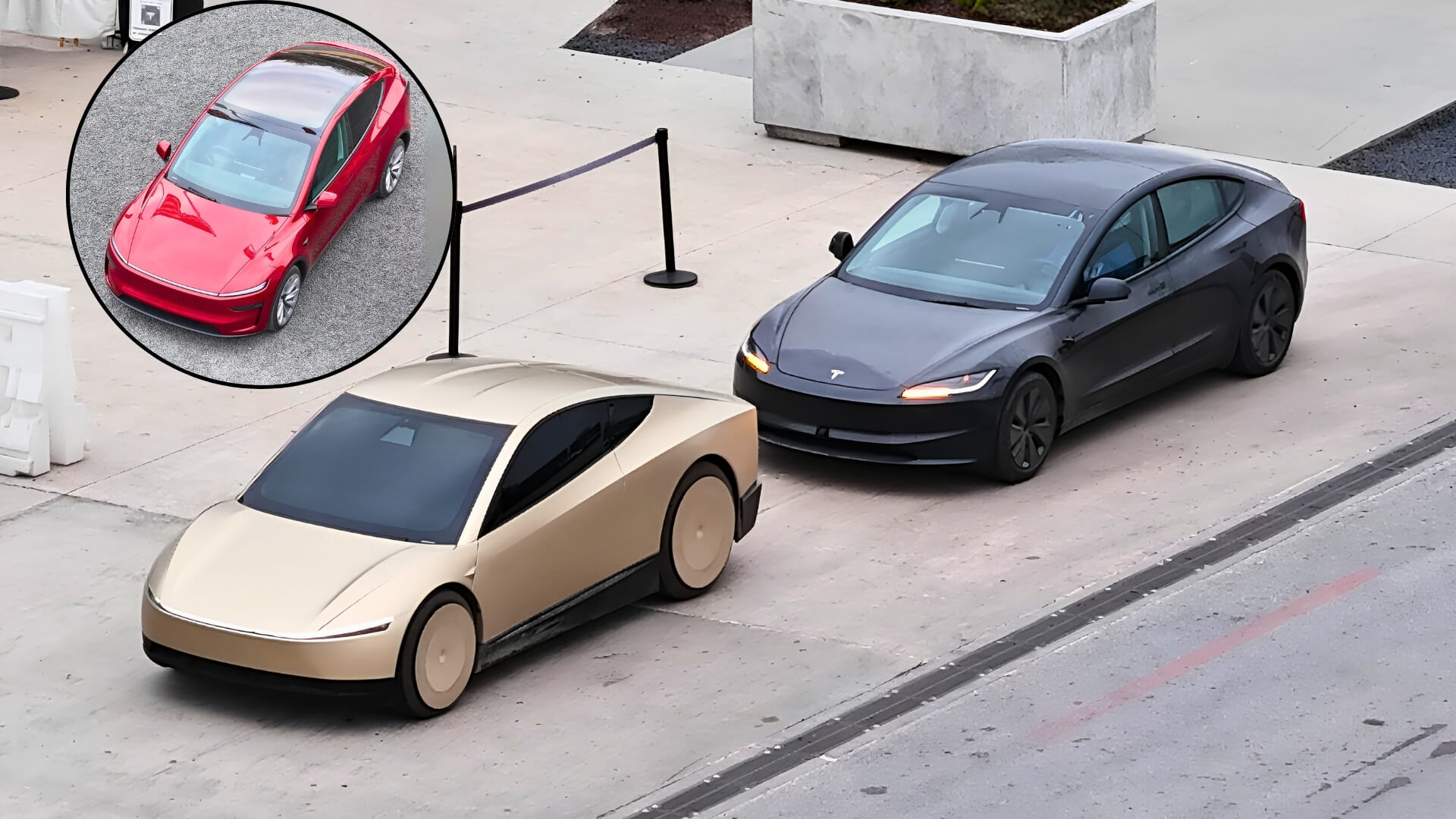The Tesla CyberCab is advancing its autonomous taxi goals since tests were observed at Giga Texas. The public sighting generated pleasure across the Tesla community and expert circles because it showed how Tesla approached the launch of a commercial Robotaxi service.
The Cybercab testing program covers areas surrounding Giga Texas, including the highway’s East side and the Southern part of the “Cyberpunk” and “Fork” display. The Cybercab goes through operational tests that include effective movement alongside human guests and other traffic vehicles. The company has started executing water permeability examinations for its vehicles.

CyberCab: Tesla’s Vision for Autonomous Ride-Hailing
The Tesla CyberCab serves as an autonomous vehicle that Tesla plans to use in its upcoming ride-hailing system. The CyberCab represents its own distinct vehicle type because it is specially designed without any human driver functionalities for enhanced efficiency combined with premium passenger comfort and an extended product life span.
Throughout his years in leadership at Tesla Elon Musk has promoted the future benefits that self-driving capabilities offer for transportation systems. The vision of Tesla owner-participation in a shared Tesla Network exists to generate passive income while improving urban traffic conditions within a future scenario. The CyberCab makes up an essential part of this strategy because it operates autonomously as a taxi service that functions without any human drivers.
Cybercab testing this morning at Giga Texas … I saw several testing runs around the factory today, here is a portion of one of these runs. Chase Model 3 is back & LiDAR Model Y cameo too. pic.twitter.com/4PFVsvJHY6
— Joe Tegtmeyer 🚀 🤠🛸😎 (@JoeTegtmeyer) February 7, 2025
How the CyberCab Fits into Tesla’s Bigger Picture
The development of FSD technology by Tesla continues at full speed while Musk insists autonomy will bring out Tesla’s entire potential. Various aspects could change dramatically with the introduction of the CyberCab system:
- Through automation Tesla plans to enter the ride-hailing business to provide an efficient service that competes against Uber, Lyft, and taxi companies.
- The autonomous fleet represents a cost-saving model because Tesla eliminates employee salaries from its operation which drives down the prices of transportation.
- Deploying CyberCabs in dense urban areas brings improved transportation access and reduced urban congestion.
- The robo-taxi network will establish a significant profit stream for Tesla which can produce continuous revenue from ride-hailing services.
Steering Wheel Debate
A Cybercab prototype was spotted at the Giga Texas test track 1 while carrying an apparent steering wheel as part of its evaluation. Some analysts believe the Cybercab needs a steering wheel to qualify as a Tesla Model 2 compact model even though Tesla’s chief designer previously said the Cybercab would lack the steering wheel. Testing with driver supervision could be the reason why an actual steering wheel exists in the current prototype model.
Tesla aims to begin initial Cybercab production in 2025, with mass production by 2026, with a target of producing at least 2 million units annually. The Cybercab is designed as a two-seat, steering wheel-less electric vehicle intended for autonomous ride-hailing.
Tesla Model Y LiDAR version
The Tesla Model Y LiDAR version is currently undergoing testing at Giga Texas, showcasing a new layer of technology integrated into the vehicle. LiDAR, which uses laser pulses to create 3D maps of the surroundings, is being tested as part of Tesla’s exploration into enhancing its Full Self-Driving (FSD) capabilities. While Tesla has traditionally relied on cameras and radar for its vision-based approach to autonomous driving, the introduction of LiDAR could provide more accuracy in object detection, particularly in complex environments.
What’s Next?
The CyberCab testing at Giga Texas indicates that Tesla continues active development of its future innovation. The future release timing for CyberCab includes official announcements that might extend to official rollout in certain cities during the next few years if Tesla maintains its current development pace.



